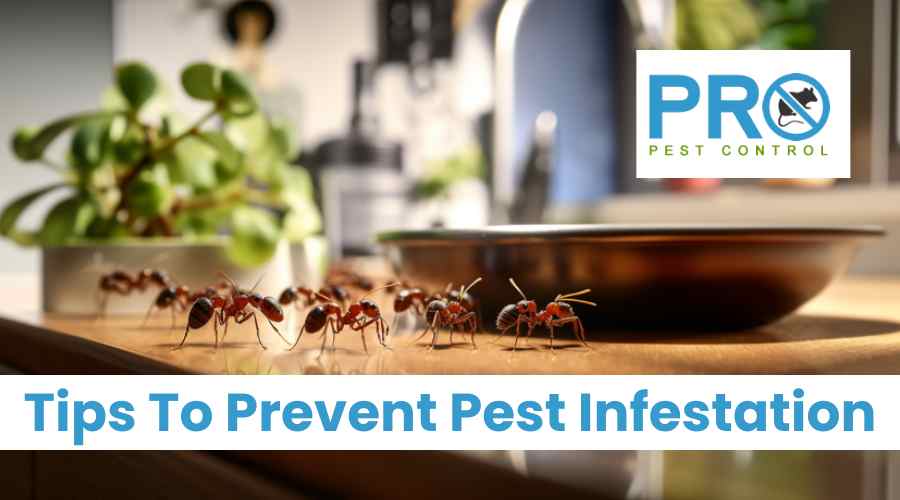How to Prevent Pest Infestation
10 Tips to Keep Your Home Pest-Free
Dealing with pests like ants, cockroaches, mice, and other critters in your home can be frustrating and unpleasant. While calling in pest control professionals is sometimes necessary, there are several DIY steps you can take to help prevent them from invading your house in the first place. Taking proactive measures allows you to avoid the hassle and risks associated with heavy pesticide use.
This article outlines tips for making your home environment less hospitable for common household pests.
1. Do a Deep Clean of Your Home
Giving your home a deep cleaning can eliminate food sources and hiding spots that attract common pests. Pay special attention to the riskiest areas:
- Kitchen – Clean behind and under appliances, inside cabinets and drawers, under the sink and stove, and along baseboards. Vacuum crumbs in hard-to-reach areas.
- Bathrooms – Scrub inside cabinets, under sinks, and along baseboards. Ensure grout lines and caulking are free of grime buildup.
- Storage areas and basements – Clear out clutter. Vacuum, mop, and wipe down shelves and storage bins.
2. Regularly Throw Out Your Rubbish
Pests forage through trash for scraps to eat. Prevent them from scoping out your garbage by:
- Taking trash bags to outside bins every 1-2 days
- Using bins with tight-sealing lids
- Cleaning cans regularly to avoid residue buildup
Prompt rubbish removal eliminates a major pest source of food.
3. Seal Any Cracks and Holes
Even tiny gaps in walls, floors, ceilings, windows, doors, roof, and foundations provide access for pest to enter and nest.
- Caulk or spray foam sealant around pipes, wiring holes, cracks
- Weatherstrip around doors and windows if needed
- Screen in windows, vents, chimneys, overhangs with mesh
Sealing off all possible pest entry points is crucial for keeping them outside where they belong.
4. Keep Drains and Pipes Clog-Free
Cockroaches, drain flies, and rodents rely on moist, organic matter inside drains and pipes. Prevent this by:
- Using mesh drain covers
- Flushing pipes regularly with hot water
- Treating with enzyme cleaner or mechanical snake device
Unclogging drains prevent residue buildup that type of pest feeds on.
5. Eliminate Water Sources
Moisture provides the essential breeding ground for many pests. Fix leaky sinks or pipes right away. Also:
- Repair cracks in foundations and outdoor structures
- Slope soil away from structures’ exteriors
- Modify irrigation to avoid excess dampness
- Fix dripping Air Conditioning units
- Dehumidify damp basements
Keeping things clean and dry deters pest nesting and reproduction.
6. Keep Food Supplies Stored in Airtight Containers
Pantry staples like flour, cereal, rice, pasta attract weevils, moths, ants, rats, and other bugs. Solve this by:
- Transferring items to rodent-proof plastic, glass, or metal containers
- Avoiding storage directly on floors or against exterior walls
- Refrigerating some items if possible
Proper food storage limits pest access to their desired nutrition sources.
7. Manage Your Landscaping
Overgrown plants, dense shrubs, wood piles, and excess debris near your home’s exterior provide ideal nesting sites. Maintain your landscape through:
- Regular mowing, pruning, and cleanup
- Moving woodpiles far from building foundations
- Raking up fallen leaves or organic litter
- Installing outdoor lighting to disturb nocturnal visitors
Careful landscape management eliminates much of the shelter and meal pests seek.
8. Sanitise Soft Furniture
Bed bugs, fleas, dust mites, and other blood-sucking insects take cover in upholstered furniture. To prevent infestations:
- Vacuum crevices thoroughly every few weeks
- Use steam cleaners on cushion seams occasionally
- Treat with chemical sprays if needed
- Dispose of heavily infested furniture
Routine sanitising keeps pests from hiding and breeding in soft furnishings.
The Bottom Line
Taking preventative pest control steps at home is simpler than dealing with established infestations later down the road. Focus on denial of food, stagnant water, and entry points to keep pesky invaders away using these DIY tips. Consistent diligence with proactive housekeeping and maintenance measures will help avoid the frustrations of a major pest infestation.
Pro Tip: Signs of pest activity are often the first clue of an emerging issue. Conduct regular exterior inspections around entry points as part of an integrated pest management plan to catch problems early. Pay attention to burrows, droppings, rub marks, and other signs that humans may notice. Fixing things fast stops more pests from coming.


Leave A Comment
You must be logged in to post a comment.